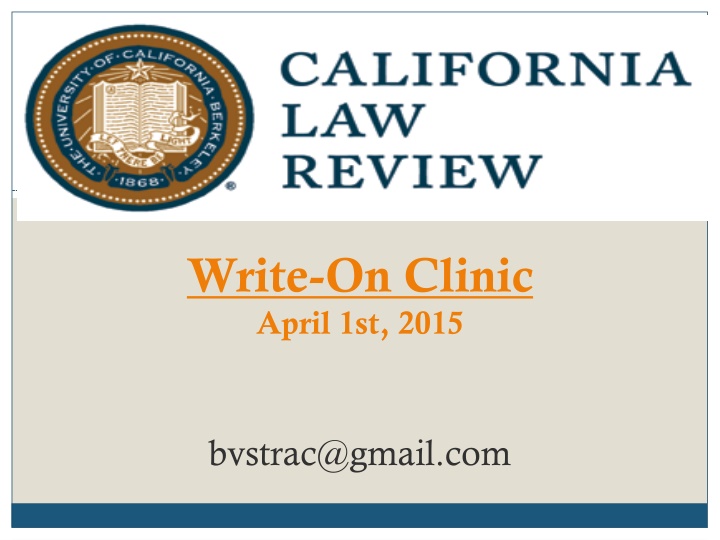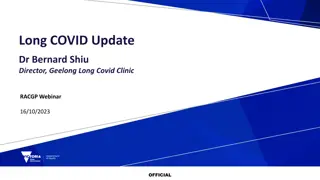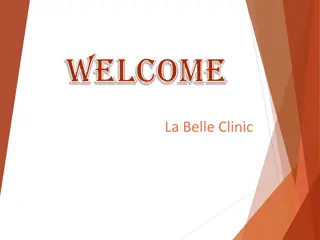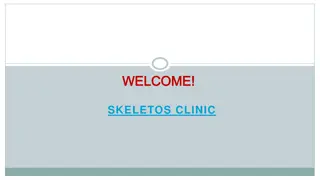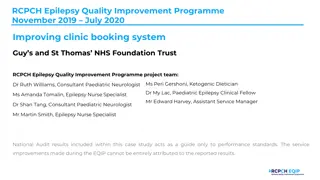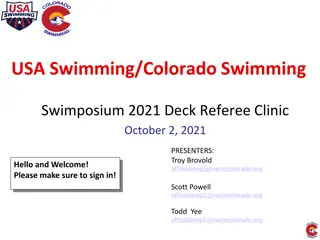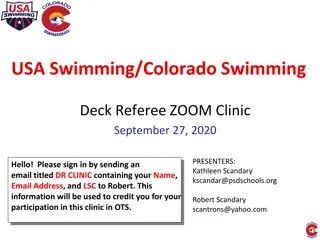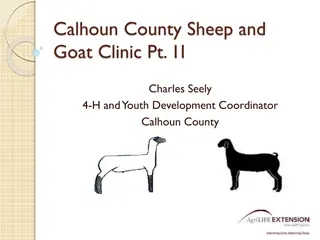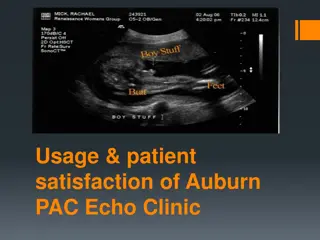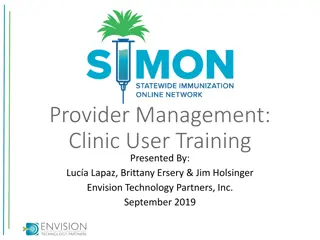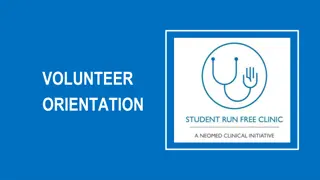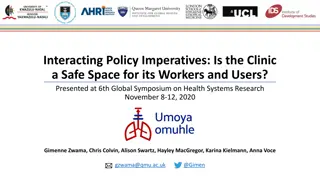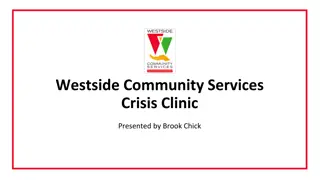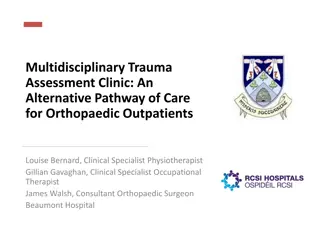Write-On Clinic Details and Tips
Get insights into the Write-On Clinic at the April 1st, 2015 event, including components, deadlines, and tips for personal statements and line editing. Learn what to focus on, how to structure your writing, and the importance of attention to detail. Prepare effectively for the Write-On 101 challenge with expert advice and guidelines provided in this comprehensive resource."
Download Presentation

Please find below an Image/Link to download the presentation.
The content on the website is provided AS IS for your information and personal use only. It may not be sold, licensed, or shared on other websites without obtaining consent from the author.If you encounter any issues during the download, it is possible that the publisher has removed the file from their server.
You are allowed to download the files provided on this website for personal or commercial use, subject to the condition that they are used lawfully. All files are the property of their respective owners.
The content on the website is provided AS IS for your information and personal use only. It may not be sold, licensed, or shared on other websites without obtaining consent from the author.
E N D
Presentation Transcript
Write-On Clinic April 1st, 2015 bvstrac@gmail.com
Write-On 101 Consists of three components: 1. Personal Statement 2. Line Edit Packet 3. Casenote Write-On Dates: Starts at 12pm on May 14th Ends at 12pm on May 24th
Personal Statement 20% 2 pages maximum (double-spaced) Specific page layout details to be provided in the packet Graded by 8 CLR Members Highest and lowest scores dropped, the rest are averaged Prompt Available On The CLR Website (and via Handout from the First Meeting and Kim s emails!)
Personal Statement Tips Do NOT use your law school application personal statements Do NOT provide a laundry list of accomplishments Do Answer the Prompt Tell us WHY CLR and what you bring Questions to think about: Who are you? Why are you here? What do you bring to CLR? What are you passionate about? Why do you want to get involved with legal scholarship?
Line Edit Packet 30% Approximately 9 pages Use the proofreading marks CLR provides (see your handout!) Refer to the CLR Style Guide! What are we testing? Bluebooking of footnotes Cite-checking and source support Grammar and editing skills
Line Edit Packet Above the Line Edits : The Main Text Structural problems Does this paragraph have a topic sentence? Should this be two paragraphs and not one? Is this paragraph out of place? Sentence Structure Run-on sentences? Active vs. passive voice? Grammar & punctuation Correct spelling? Correct punctuation? Below the Line Edits : The Footnotes Small caps? Abbreviations? Signals? Correct order of authority? Run-on sentences? Correct spelling? Correct punctuation? Do not use the blue pages! Remember that the Bluebook Index is your friend!
Line Edit Packet Cite Checking Check accuracy of cited information Pay attention to signals, date, court, page references Insert information where necessary Check all quotations All quotations must match original source verbatim Check for missing source support! Does the author make a statement with no footnote whatsoever? Does the cited source actually support the proposition?
Line Edit Packet Tips Take your time! Some begin by editing the entire packet above-the line first, THEN editing below the line. Make it as clear and easy to read/grade as possible. As long as your grader can tell what you did, you re okay (assuming it s correct!). Do NOT look outside of provided source materials. Learn how to access all tools before the Write-On Competition. This is particularly true for CMS! Make sure you have read the Style Guide for any rules or exceptions to the rules specific to CLR!
Line Edit Packet Submission Scan your Packet, then transmit it electronically along with the rest of your write-on submission! A great idea is to print two of the line edit packets. Complete your line edit in pencil on one version. Then when you are confident it is complete, engage in all of your red ink and highlighting glory on the final copy to be scanned. No late submissions will be accepted. Email bvstrac@gmail.com if you anticipate any problems with turning it in.
Casenote 50% 18 pages maximum, 28 lines of text per page In MS Office: Format Paragraph Line Spacing: Exactly At: 23 pt. Specific page layout details to be provided in the packet instruction. Evaluated by 6 CLR Members Sample Casenotes will be on reserve in the library. We will update you via email.
Casenote 50% Purpose Provide commentary and legal analysis on a judicial opinion Can be focused on any aspect of the case! Materials Everything you need will be in your packet (case and research materials) Do NOT cite to any outside materials. DO NOT cite a case in a reporter different from the one you received it in!
Casenote Packet: Getting Started 1. Relax! Don t panic! 2. Read the main case! Mark it in the margins, or take notes! Look for good reasoning or poor reasoning, counterarguments, etc. Take note of other cases the court relies upon to guide its analysis. Surprise, surprise, many of those cases will also be in your packet! 3. Read foundational cases. If a case seems tangential or an offshoot of the main line of cases, you can put it aside and come back to it if it s relevant later!
Casenote: What Next? Law Review Articles! How do I even begin? There are so many pages in the packet still! 1. Glance at the article titles. Start with something that sparks your interest. 2. Read abstracts! If interest continues, then: 3. Read the Introduction. This can be an excellent stopping point to move on to the next article. Next Steps could include: reading the conclusion, reading the topic sentences of introductory paragraphs of the analysis sections, or just diving into the article because it is of interest. !! You might start to notice different clusters of topics as you read. Home in on this and run with what sparks your intellectual interest! If Law Review Articles seem boring, peek at other sources. Read what jumps off the page at you!
Suggested Casenote Structure Introduction Court s holding Thesis The Case Procedural history Relevant facts Court s holding and reasoning III. Legal Background & Existing Law Previous law. You do NOT necessarily need to cover every case we give you, especially if that case covers legal background not relevant to your thesis. You DO need to cover any truly seminal cases in the field. I. II.
Suggested Casenote Structure IV. Case Analysis Was the case correctly or incorrectly decided? How does this case fit into existing law? Is the decision sound in light of public policy? Does the opinion correspond with empirical data or a particular theory or justification for the Rule? V. Conclusion Summarize and unify your basic arguments.
Casenote Grading What are we looking for? Analysis Structure Grammar, Style, and Bluebooking
Casenote Grading: Analysis Is there a clearly defined, identifiable thesis? Does the argument support the thesis? Are there adequate sources to support each claim? Were there obvious counterarguments that were not addressed by the author? Avoid setting up strong counterarguments against your position as a strawman. Depth and nuance of the analysis?
Casenote Grading: Structure Does the analysis flow from one paragraph to the next in a logical way? Is appropriate space apportioned to each section? Is the Casenote too background heavy and too light on the analysis? Are there unnecessary facts or detail in the Legal and Factual Background sections? Are there clear, useful and persuasive headings? Does each paragraph contain a topic sentence?
Casenote Grading: Grammar, Style, Bluebooking Did the author use active voice? Are there variable sentence structures? AVOID: wordiness, block quotes, long sentences (more than 27 words), paragraphs (more than 3 5 sentences) or sections (more than 3 pages) Correct spelling and punctuation? Grading rules will be based on Chicago Manual of Syle, Bluebook, and CLR Principles of Style
Casenote Tips Not expected to use all of the authorities! Review material quickly before you try to form a thesis Thesis: Pick a single, discrete issue Support thesis and address counterarguments Be clear, concise, and organized (headings) Proofread and revise carefully! Transitions, topic sentences, proper Bluebooking format
Write-On Registration Details will be Forthcoming in an Email to all of you, detailing registration requirements. Some of these are covered in the next slide.
Important Policies Disability Policy Same accommodations students receive on other similar take- home exams Honor Code The Honor Code is in effect for this competition. You will sign a copy of this, along with a FERPA Waiver Form (see below) and turn them in to the CLR Office as part of Registration requirements. FERPA The Journal collects demographic info on students who participate in the annual write-on, this will not affect admissions decisions. Collection of this data is optional. Releasing information you disclosed in your application to Berkeley Law is completely optional!
CLR Time Commitment During the school year Approximately 80 hours per a semester It is possible (and encouraged) to be a member of CLR and hold leadership positions in other journals/organizations 1L Summer Mandatory orientation late in August. It will be really helpful, fun, and we will do our best not to interfere with 2L summer job interviewing! 2L Summer Must commit to grading the Write-On
Additional Tips Follow the Instructions Otherwise you may be disqualified Time Management Make sure you allot time to upload the Casenote and personal statement and turn in the editing packet Only use the authority that is provided in the packet Make sure to organize your thoughts and look at the samples before starting
Additional Tips Get started early and keep at it! Don t think about how much time you need to spend tell yourself how many times you will start working on it that day (e.g., I will start work on this six times today, or twice today, etc.) Celebrate every time you start work on it! Use the materials effectively Do not read each and every single page of the packet There is no right answer (except on the editing section) Do not quit because you don t know if you re doing it right
Questions? Concerns? bvstrac@gmail.com (Yes, you have seen this a million times, but we are here for a reason! We want you to succeed!)
